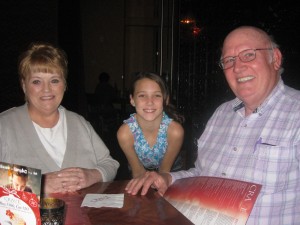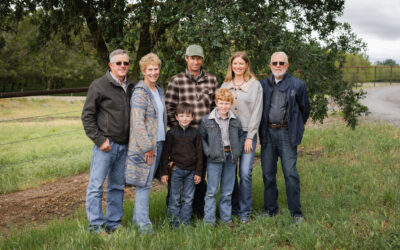
History lessons
Some “recent” history: I was digging back through some information we researched out of the Iowa Tri-County Steer Carcass Futurity (TCSCF) database the other day. These findings were then presented at the Midwest section meetings of the American Society of Animal Science in March of 2008…….four and half years ago. I was trying to see what factors influenced Certified Angus Beef (CAB) acceptance rates.

Now, we have had Expected Progeny Differences for a long time. DNA technology has evolved over time, including our new GeneMaxTM test, which quantifies marbling and post-weaning gain in high-percentage, commercial Angus cattle. But folks, let’s face it: in the commodity mix of black-hided unknowns, we aren’t going to have that information in place in many cases. This TCSCF database does have more information in it than most. Led by the (extremely competent) Darrell Busby, former Iowa State University Extension Livestock Specialist, the TCSCF program has probably been utilized more than any other beef cattle database in the U.S. With Mike King’s invaluable help (he’s our statistics MASTER!), here is what we came up with out of 220 lots of cattle harvested between 2003 and 2007:
1. Lots consisting of heifers had higher % of low and premium Choice (upper 2/3rds, e.g. Certified Angus Beef) and above rates than lots of steers or mixed-sex pens.
2. The greater the amount of Angus influence in the cattle, the higher the percentage of low and premium Choice and above rate.
3. Cattle with lighter feedlot arrival weights had a higher percentage of low and premium Choice and above rates..
4.Cattle with lower disposition scores (calmer cattle) had higher percentage of low Choice and above rates; but didn’t have higher premium choice rates.
5. Cattle with a lower cost of gain had higher percentage of low Choice and above rates. Cost of gain was not lower in premium Choice grades.
6. Lot percentage of low- and premium Choice-and-above rate increased as average daily gain (ADG) increased.
Let’s boil it down to the finer points without going into all of the regression coefficients:
Premium Choice rates for heifers were twice as high as those for steers or mixed-sex pens.
For every 1 point increase in percent Angus, lot premium Choice acceptance rate would be expected to rise by 0.083%; so the difference between two pen of Angus-influenced cattle that were 50% and 75% Angus would be 2.32%, all else being equal.
For every 1 pound drop in in-weight (beginning feedlot weight), lot premium Choice rate increased by 0.066%; meaning the difference in percentage of cattle qualifying between a pen of 600-lb. steers and 500-lb. steers (at feedlot entry) would be 6.6%, everything else being equal.
For every 1 pound increase in ADG, lot premium Choice acceptance rate rose 14.5 points; or for every 0.1 lb. increase in ADG, % premium Choice would rise 1.45 percentage points. An example: one would expect a pen of calves gaining 3.6 lb. per day would have a 21.4% acceptance rate compared ot a 20% acceptance rate for a pen of steers that gained 3.5 lb./day.

Pretty good stuff, huh? For history’s sake! For more information about this abstract, go to the website.
Or heck, just give me a call. We can talk about history!
You may also like
Legacy in the Golden Land
On a quiet stretch of Northern California rangeland, a different story unfolds. The Borror family’s legacy modestly speaks through the cattle they raise, the ground they steward. The generations who’ve made a life here demonstrate commitment to doing things right, even when no one is watching.
Purpose Follows Passion
A chance opportunity. A change in career direction. And meat science was changed forever. Dr. Gary Smith originally had no plans to become a meat scientist. But thank goodness he did.
Marbling, Feet and Fertility: Are they related?
The Angus breed has enough genetic diversity to allow breeders, and their commercial bull customers, to make progress across multiple traits simultaneously. One bloodline may be high in marbling but does not check the boxes you need for other traits. That does not mean marbling is the cause—it simply means your search for the ideal genetic pairing is not done.



